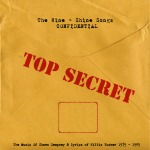 Yes–I’m going to share some secrets with you! So remember, this is all just between me and you and your colleagues, Twitter followers, LinkedIn connections, Facebook friends/fans, kids, neighbors and anyone else you feel like chatting up. Of course then it won’t be much of a secret, but that’s okay with me. The more, the merrier!
Yes–I’m going to share some secrets with you! So remember, this is all just between me and you and your colleagues, Twitter followers, LinkedIn connections, Facebook friends/fans, kids, neighbors and anyone else you feel like chatting up. Of course then it won’t be much of a secret, but that’s okay with me. The more, the merrier!
But let’s start with a question: What is it that makes great live events better than just getting the same content some other way? Think of some examples–like the difference between a truly memorable dining experience and the thought of just having the meal delivered to your home or hotel room. Or watching a DVD of a music festival compared to actually being in the middle of it all. Or reading the minutes of a business meeting vs. participating in it. How about watching a well-produced YouTube video of a keynote speaker instead of being there? (Hmm…I bet that last one was not so obvious. But you get my point.) Why do I suggest that the last example is the weakest? Don’t get me wrong, there are plenty of dynamic and inspiring keynote speakers out there. But the question is: what do you really get out of the experience of attending an event that can’t be substituted with some kind of copy?
For some reason, this reminds me of that term “Web 2.0”. Now, for those of you who haven’t been indoctrinated to this terminology yet, Web 2.0 refers to the second “version” of what we call the Internet. If you’re old enough to remember as far back as the Clinton presidency (yes, that includes you, Millenials), Web 1.0 was pretty much a new form of one-way information distribution. When you visited someone’s webpage, you could read whatever information they had prepared for you, sort of like an online brochure. Heck—they even had photos and stuff. But it was pretty much a static experience; you viewed it and moved on. There is still tons of Web 1.0 content out there, and it’s not likely to go away. It’s flexible, convenient and it definitely serves a purpose.
Not too many years later, Web 2.0 took things to a different level: now, instead of being limited to whatever the webmaster of each site puts on display for you, much of what you see on the Internet is “user-generated” content—and the “users” are us. Pretty big paradigm shift, actually. Easiest example? Facebook. Think about how much of what you see on Facebook has been created by Mark Zuckerberg and the massive staff down at FB Headquarters. Other than the ads on the sidebar, the correct answer is “very little”. It’s just a shell created in order to allow people to share their knowledge and creative ideas. By definition, every social media tool does pretty much the same thing.
So what is Events 2.0? Same idea, basically. Any time you go to an event and just sit there and take it in, you’re in Event 1.0 mode. Nothing wrong with that necessarily; you can still enjoy and maybe learn a few things from it. But take it up to V2.0 and now the participants are not only involved, they’re actually contributing much of the content. And that’s engaging—just as much as going to that amazing restaurant or contributing your ideas and solutions at a business conference. But like Facebook, someone has to design the structure of the event so that it will get people engaged in the first place. And that’s where the secrets come in!
 It doesn’t matter whether you’re a sponsor trying to build relationships with your target clientele, or a corporate trainer bent on raising the skill level of your employees, or an activist trying to inspire people to your cause. To fully-engage your audience, you’ll need to build these four components into the experience you provide:
It doesn’t matter whether you’re a sponsor trying to build relationships with your target clientele, or a corporate trainer bent on raising the skill level of your employees, or an activist trying to inspire people to your cause. To fully-engage your audience, you’ll need to build these four components into the experience you provide:
- THE HOOK. To get people engaged, first you need something that initially attracts their attention and draws them in. This doesn’t just distract them; it also gets them into a receptive state by shifting their attention, so they can leave behind whatever else they were focused on before. A slightly goofy (but effective) version of this: Flash Mobs. Take a look at the example below and see what I mean. Notice how the “attendees” respond towards the end.
- CONTENT RULES! Of course, you need to present something that’s relevant or otherwise fascinating to this particular audience; otherwise, their attention will quickly move on. Ideally you’ll have something that answers a question, need or opportunity they have or–even better–introduces them to one they didn’t know they had. In any case, none of these secrets apply if you don’t have something that will be of significant value to your audience. So plan on spending a big chunk of your time on this one. Otherwise, none of this matters.
- DESIGN FOR INTERACTION. This is really the Events 2.0 part. Getting someone’s attention and delivering fresh content is just getting started: you also want to create an experience where everyone needs to participate on some level, whether it’s physically, intellectually, emotionally, or all three. That’s the main thing that interactive events can provide that can’t be substituted by one-way communication. Put people in a situation they’ve never been in before. Provide the opportunity to experience and respond to something new and learn from not only the “expert” presenters, but from each other. This is the power of bringing people together. In the end, engaging experiences usually leave us changed in some way, but it doesn’t happen by itself–you need to create the context. And remember that in many cases, your presenters will not have the skills and experience to create this, so you may have to help (or get help).
- CLOSE THE DEAL. Here’s the Big Finish: it’s not enough to get people thinking. In order to convert the event experience into useful take-aways, it’s critical to build in time for participants to individually process, reflect on and plan how they might use these new ideas and experiences. This is the real work, but it’s the part that will lead to concrete results. People need some time to think on their own, but it can help to provide the opportunity for discussion, collaboration or even hands-on group activity. We know enough about how our brains function to expect that, without this step, most of what we’ve encountered during the event will dissipate fairly quickly. This is also the time for committing people to action, to ensure that the event has a lasting impact.
If any of these steps is missing from the design of your experience, you’re probably stuck back in the time of Events 1.0. And I would bet that your event is not getting the impact it could, or should.
In future posts, I’ll be expanding and providing specific examples of how people are really applying these principles to take their events up a notch and you’ll have the opportunity to share your own stories and secrets. For now, feel free to leave a comment about anything that this post brought to mind!




June 13th, 2011 at 12:20 am
Ah, so I am reading this at a time I should be asleep .. and because I totally engaged in the Tony Awards, I am wide awake! Tired, but wide awake!
One of the people who won an ‘off-camera’ award said that in a world of iphones and ipads there was still nothing like the experience of live theatre. And there isn’t.
We don’t get to New York for Broadway theatre. We do go often to plays and musicals in DC – and always find something in them to like/learn from/lift our spirits/make our hearts hurt/bring us joy/move us to activism. Nothing does that for me as well as theatre – live theatre.
Sharing the Tonys tonight with a twitter audience helped me experience it. So Web 2.0 was in action, yes?
I have wondered for years why meetings are not more like theatre — why there is not the pure joy that is felt.
For me, I fear even 2.0 is not what I need.
Now what?
June 13th, 2011 at 2:19 pm
Joan, thanks for staying up late to comment! And yes, you are certainly a strong contributor to Web 2.0.
You pose an interesting point here: “I have wondered for years why meetings are not more like theatre — why there is not the pure joy that is felt.” I would say that it has to do with two things: first, creating “joy” doesn’t usually show up at the top of the meeting objectives and, second, most of us who plan or execute meetings don’t have the skills of a Broadway producer (although I suppose we could hire one if there’s room in the budget, and some do, a la “Broadway In A Box”).
I was actually thinking of another angle RE: the Tony Awards event, though. Maybe it’s enough for an event to entertain the audience and celebrate achievements in that industry, but did the event organizers make the most of the opportunity to capture the audience’s imagination and channel that towards some kind of positive change? Very powerful tools at their disposal–lots of famous people, huge sponsors, global audience…how could they have integrated other elements to give the event a lasting impact on the participants?
June 13th, 2011 at 3:31 pm
Oh Peter.. of course! “Joy” almost never appears .. nor does “fun” or “play” on the lsit of objectives! It’s all about learning and “networking.”
And I don’t think we have to be Broadway producers to put on a meeting that has joy or fun or energy. For example, what if the room sets were audience-centric and the lights were up as we walked into a room so that we could connect with others? What if we trained more people in improv so they felt more comfortable talking with others? What if there were really a sense of community that brought us together?
Let’s now take the second part of what you wrote – how can we do this? Are there examples of which you know that have done this?
And I don’t think we need “BIG” (dollars, sponsors, laser shows, etc.) to make it all work!
June 24th, 2011 at 9:51 am
[…] Events 2.0: The 4 Secrets of Fully Engaging Your Attendees […]
June 29th, 2011 at 11:02 pm
[…] I’ve been writing about something I call Events 2.0, which is a nod to the term Web 2.0. By that I mean events that go beyond just a passive TV-style […]
July 12th, 2011 at 9:30 pm
Joan’s theater comparison is interesting, especially because theater performances are rarely interactive. But they still hit a strong chord with the audience (hopefully).
Regarding associations: 1) can “pure joy” be conveyed in a passive environment, as is a theater performance; 2) can interactive experiences always elicit “pure joy;” 3) does every experience have to be “fun;” and, 4) do different groups define “fun” differently.
Like just about everything else, you need to know who your audience is, what they want, and how to strike a strong chord with them. Every group and every situation will be different.
July 14th, 2011 at 4:53 pm
Isn’t it funny, David, that I think of theatre as interactive when it’s not? Maybe it’s why I’m such a good audience — I emote so much and thus interact in my own way.
And yes, it’s the strong chord that is it – the emotional connection – with the words, the theme, the music, the food for thought or even the pure entertainment. Of course for me, there is almost no such thing as “pure entertainment”: I always take something away that is an idea to use for a meeting or program!
Agree with knowing your audience and that “fun” has to be defined by each person and each group separtely. Instead of “fun”, perhaps it’s the emotional chord that is hit? And “joy” is for me the joy of learning – an idea or a thought triggered – with which I leave knowing how I’ll use it.
Is it semantics?
July 28th, 2011 at 1:06 am
[…] I’ve been writing about something I call Events 2.0, which is a nod to the term Web 2.0. By that I mean events that go beyond just a passive […]